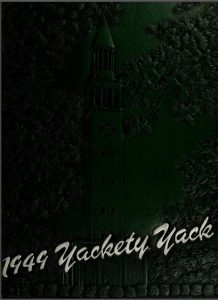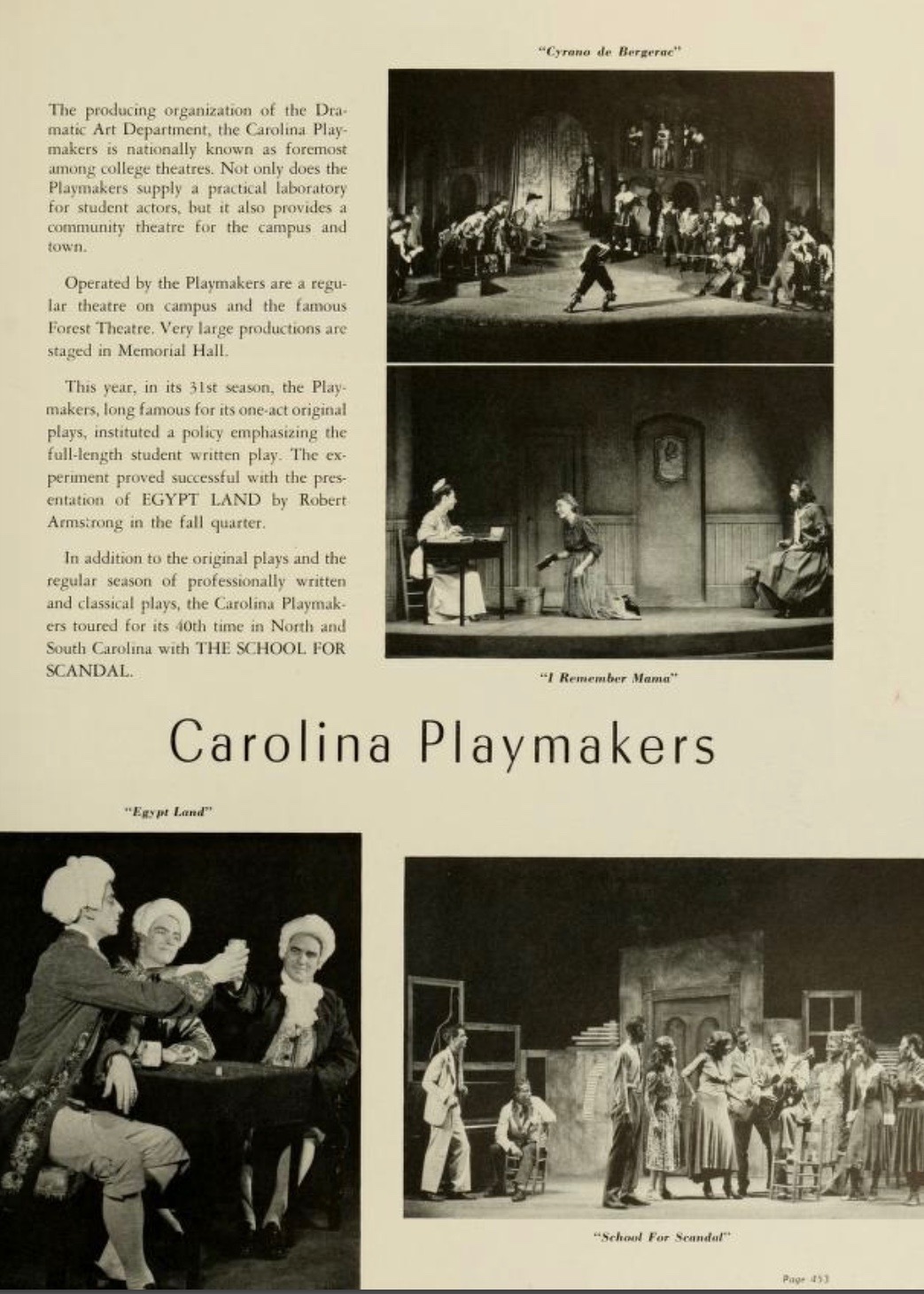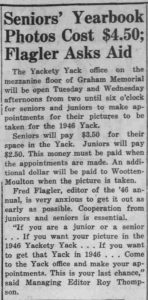After noticing that Andy was not pictured in the class photos for his class in the 1947 University of North Carolina Yackety Yack yearbook my friend Jimmy gifted me, I researched the matter and learned the same held true for the 1945, 1946, and 1948 yearbooks.

Andy graduated in 1949, so I also checked that yearbook as well. As will come as no surprise, once again, he is not pictured, this time with the senior class. One interesting item to note, though, is that a play that Andy viewed as important in his young career is briefly mentioned. On the Carolina Playmakers page, part of the text states, “This year, in its 31st season, the Playmakers, long famous for its one-act original plays, instituted a policy emphasizing the full-length student-written play. The experiment proved successful with the presentation of EGYPT LAND by Robert Armstrong in the fall quarter.”

Armstrong was a graduate level student who wrote Egypt Land. The description of the play I have read does not seem to match the photo from the production in the lower left-hand corner of the yearbook page, but it is hard to know if this is a captioning error or if the play was a more drastically different take on Armstrong’s source material. Andy Griffith related that Egypt Land was based on the life of the folksinger and guitarist known as Leadbelly. Andy played the lead.
Andy and Robert (or Bob) Armstrong became lifelong friends. After Andy began starring in The Andy Griffith Show, his old friend—who now went by R.G. Armstrong—guest starred as the gruff farmer named Flint in “Ellie Saves a Female” in the first season.

I sought the help of the staff at the Wilson Library at UNC and, while we will never know for sure why Andy did not sit for any class portraits, they did provide some interesting numbers and statistics found in the student newspaper, The Daily Tar Heel.


First, the photos were actually taken in the fall quite early in the school year.
Second, the students did have to pay for their photos. In October 1945, which would have been for portraits to be included in the 1946 yearbook, the cost was $4.50 for seniors and $3.50 for juniors, with the student paying all but $1 when they made their appointment and paying the final dollar to the photographer at the sitting. Keep in mind that the average price for a ticket to see a movie in 1945 was 35¢.

Finally, Andy was in no way alone. Either because they forgot, could not afford the photo, or were just too busy, hundreds of students did not get their photos taken for the class portrait section of the yearbook. While the article the library provided was actually from the fall after Andy graduated, it was surely not an aberration. That year near the deadline, about 500 students out of the roughly 4700 enrollment had not shown up to get a photo taken.
By the way, Andy’s friend Robert Armstrong who was likely an upperclassman while Andy first attending and who was a graduate student when he wrote Egypt Land? He never sat for a portrait either!

